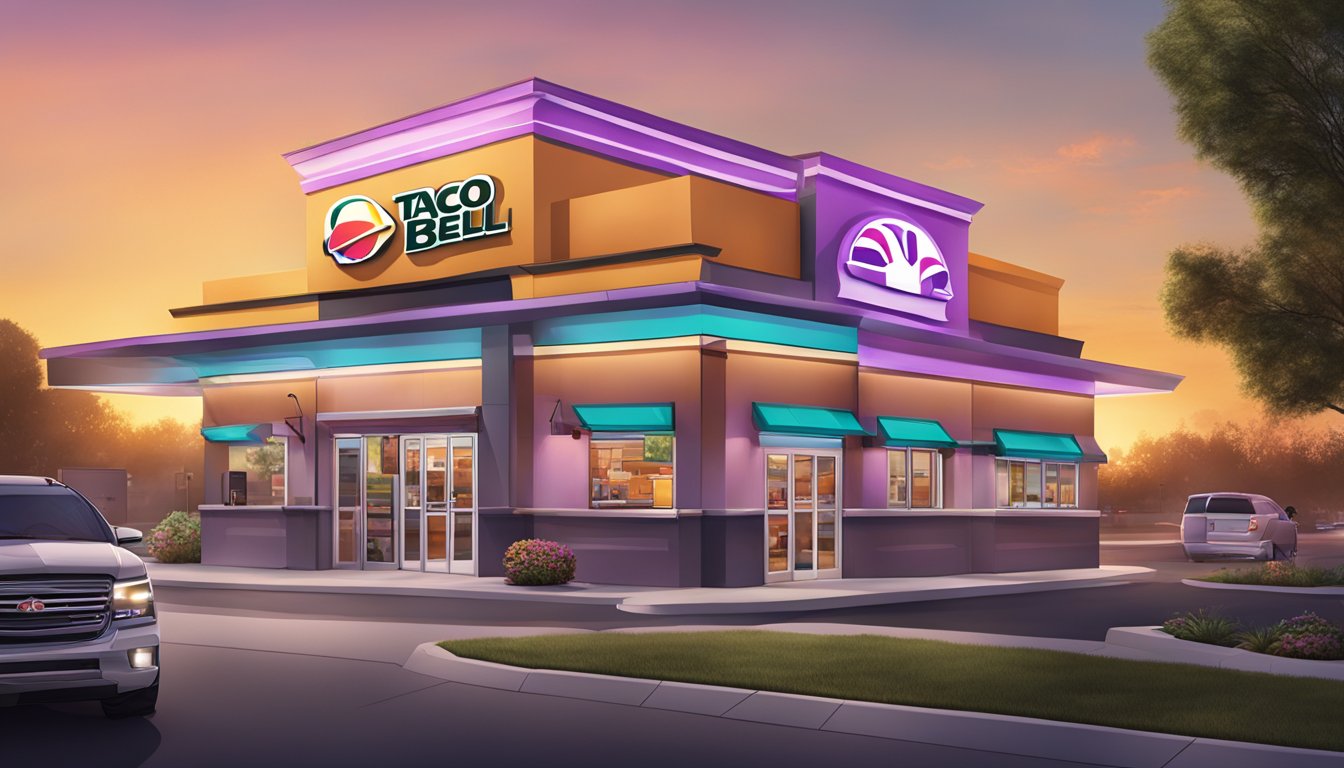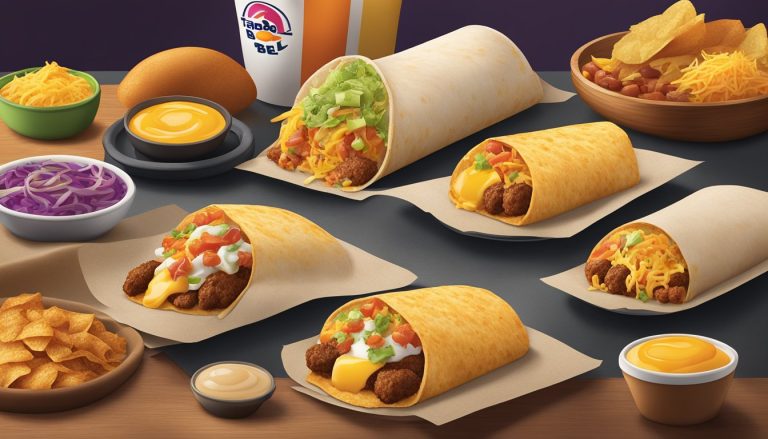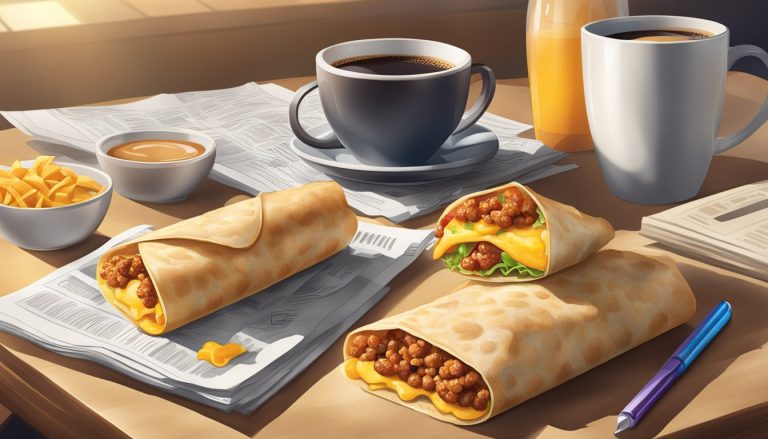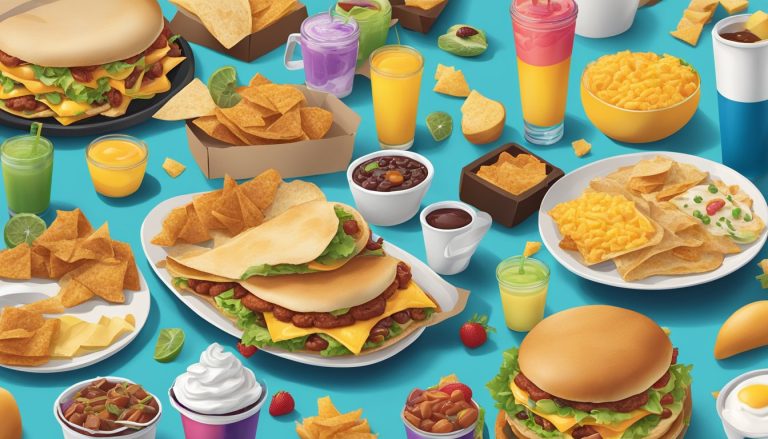Taco Bell has revolutionized the fast-food landscape with its innovative approach to drive-thru technology. The company’s commitment to digital advancements has led to the creation of Taco Bell Go Mobile locations, featuring smaller footprints and dual drive-thru lanes. These new concepts include a priority pick-up lane for rapid service, catering to customers who order ahead through digital platforms.
Taco Bell’s AI-powered drive-thrus are expanding across multiple states, enhancing ordering efficiency and customer experience. The integration of artificial intelligence into drive-thru operations represents a significant step forward in fast-food service. This technology, implemented in over 100 Taco Bell locations across 13 states, aims to streamline the ordering process and reduce wait times.
While some competitors have scaled back their AI initiatives, Taco Bell continues to push forward with technological innovations. The company’s Defy location in Brooklyn Park, Minnesota, showcases advanced features such as two-way audio and video technology for ordering and vertical lifts for food delivery. These advancements demonstrate Taco Bell’s commitment to improving drive-thru efficiency and adapting to changing consumer preferences.
History of Taco Bell’s Breakfast Offerings
Taco Bell, the popular fast-food chain owned by Yum! Brands, ventured into breakfast territory on March 27, 2014. This move marked a significant expansion of their menu and operating hours.
The initial breakfast lineup featured innovative items like the Waffle Taco and Breakfast Crunchwrap. These unique offerings set Taco Bell apart from traditional fast-food breakfast options.
Prior to the nationwide launch, Taco Bell had experimented with breakfast items in select locations. In 2001, they introduced the Waffle Wrap, a precursor to their later breakfast innovations.
Taco Bell’s breakfast menu continued to evolve over time. The chain added new items and refined existing ones based on customer feedback and sales performance.
The introduction of breakfast services also prompted changes in Taco Bell’s operations. They extended their hours and optimized drive-thru services to accommodate morning customers.
This expansion into breakfast helped boost Taco Bell’s same-store sales and digital sales. It demonstrated the chain’s commitment to innovation and meeting changing consumer demands.
Taco Bell’s breakfast offerings have become a significant part of their business model. They continue to innovate in this space, regularly introducing new items to keep customers engaged.
The Evolution of Drive-Thru Technology
Drive-thru technology has transformed rapidly in recent years, enhancing speed, accuracy, and customer experience. Fast food chains like Taco Bell have embraced innovative solutions to streamline operations and meet changing consumer demands.
Early Innovations in Drive-Thru Service
Drive-thrus emerged in the 1930s, offering convenience to motorists. The concept gained popularity in the 1950s with the rise of fast food chains. Early innovations included speaker systems for order placement and pick-up windows for food collection.
As demand grew, restaurants implemented separate lanes for ordering and pickup. This basic model remained largely unchanged for decades, focusing on efficiency and speed of service.
Digital Menu Boards and Order Accuracy
The introduction of digital menu boards marked a significant advancement in drive-thru technology. These dynamic displays allow for real-time updates of menu items, prices, and promotions.
Digital boards improved order accuracy by presenting clear, high-resolution images of menu items. They also enabled restaurants to tailor offerings based on time of day, weather conditions, or inventory levels.
Some chains integrated personalization features, displaying recommended items based on previous orders when customers used loyalty apps.
Dual Drive-Thru Lanes and Speed of Service
To address growing drive-thru traffic, many restaurants implemented dual lane systems. This innovation significantly reduced wait times and increased overall throughput.
Taco Bell’s “Go Mobile” concept exemplifies this approach. These locations feature a priority pick-up lane for customers who ordered ahead via mobile apps. This design, housed in a compact 1,325 square foot space, demonstrates the brand’s commitment to efficiency.
The dual-lane system has proven effective in decreasing average service times across the industry.
Artificial Intelligence and Voice AI Technology
AI-powered voice ordering systems represent the cutting edge of drive-thru technology. Taco Bell has implemented this technology in over 100 locations across 13 states.
These systems use natural language processing to accurately capture customer orders. They can handle complex requests, upsell items, and provide consistent service quality.
AI technology also assists staff by managing order flow and reducing errors. This integration aims to enhance both customer experience and operational efficiency.
Integration of Digital Ecosystems
Modern drive-thrus are increasingly part of broader digital ecosystems. Mobile apps, loyalty programs, and digital payment systems now seamlessly integrate with drive-thru operations.
Customers can place orders in advance, earn rewards, and pay through their smartphones. This integration reduces transaction times and personalizes the drive-thru experience.
Some chains use geofencing technology to detect when app users arrive, ensuring orders are prepared at the optimal time.
Future Trends in Drive-Thru Technology
The future of drive-thru technology points towards even greater automation and personalization. Predictive ordering systems may anticipate customer preferences based on past behavior and contextual data.
Augmented reality displays could enhance menu visualization, allowing customers to see 3D representations of menu items. Autonomous vehicles may integrate directly with drive-thru systems, placing orders automatically as they approach.
Biometric authentication might streamline payment processes, while AI-driven inventory management could optimize menu offerings in real-time.
Enhancing Customer Experience at Drive-Thrus
Taco Bell is revolutionizing drive-thru interactions through innovative technologies. These advancements aim to streamline ordering, reduce wait times, and create more engaging customer experiences.
Reducing Wait Times through Technology
Taco Bell has implemented AI-powered voice assistants in over 100 U.S. drive-thrus across 13 states. This technology takes customer orders and relays information to staff, significantly speeding up the process. The AI system is designed to handle complex orders efficiently, minimizing errors and reducing bottlenecks.
By automating order-taking, employees can focus on food preparation and delivery. This reallocation of resources helps decrease overall wait times. The company plans to expand this technology to hundreds more locations, potentially improving service speed across its entire network.
Improving Ordering Experience with Two-Way Audio
Advanced two-way audio systems are enhancing communication between customers and staff. These systems feature noise-cancellation technology, ensuring clear exchanges even in busy environments.
Customers can easily customize their orders and ask questions about menu items. The improved audio quality reduces misunderstandings and order errors. Staff can provide real-time updates on order status or estimated wait times.
This enhanced interaction creates a more personalized experience, increasing customer satisfaction. It also allows for easier resolution of issues or special requests during the ordering process.
Leveraging Video Technology for Customer Engagement
Taco Bell is exploring video technology to create more interactive drive-thru experiences. Some locations now feature digital menu boards that display dynamic content based on time of day, weather, or popular items.
The company is testing a “Drive-Thru Photo Booth” concept, adding a visual element to ordering. This feature could allow customers to see their order displayed in real-time or interact with promotional content while waiting.
Video displays can showcase new menu items, special offers, or nutritional information. This visual engagement keeps customers entertained during wait times and can influence purchasing decisions. It also provides opportunities for targeted marketing and upselling.
Impact on Franchisees and Business Operations
Taco Bell’s breakfast menu and drive-thru innovations have significantly reshaped franchisee operations and business growth strategies. These changes have introduced new technologies, altered team member experiences, and created both opportunities and challenges for franchise owners.
Adoption of Smart Kitchen Technology
Franchisees have embraced smart kitchen technology to streamline breakfast operations. Digital ordering systems now integrate with kitchen displays, automating order flow and reducing errors. Automated cooking equipment, such as programmable grills and fryers, ensures consistent food quality and faster preparation times.
These upgrades have improved efficiency, allowing franchisees to handle increased breakfast volumes without sacrificing speed or quality. Some locations have reported up to 20% reduction in order preparation times since implementing smart kitchen solutions.
Team members benefit from simplified workflows and reduced manual tasks. This technology adoption has also opened new training opportunities, enhancing skills and job satisfaction among staff.
Benefits and Challenges for Franchisees
The breakfast menu expansion has provided franchisees with new revenue streams. Many locations report breakfast sales accounting for 15-20% of daily revenue. This additional daypart has helped maximize asset utilization during previously slow morning hours.
Franchisees face challenges in staffing and inventory management. Early morning shifts require additional labor costs and careful scheduling. Some franchisees have struggled with food waste, as breakfast demand can be unpredictable.
Taco Bell’s recent decision to make breakfast optional for franchisees offers increased flexibility. This allows owners to tailor their operations to local market conditions and focus on their most profitable dayparts.
Contributions to Digital Business Growth
Drive-thru innovations have accelerated digital business growth for franchisees. Mobile ordering and payment systems integrated with drive-thru operations have increased order accuracy and speed of service. Many locations report a 30% increase in drive-thru transactions since implementing these digital solutions.
Franchisees have seen higher customer satisfaction scores and increased repeat visits due to improved drive-thru experiences. Digital loyalty programs, tied to mobile ordering, have boosted customer retention and average order values.
Data analytics from digital orders provide franchisees with valuable insights into customer preferences and peak traffic times. This information allows for more precise inventory management and staffing decisions, optimizing overall business operations.
Brand Expansion and Digital Channels

Taco Bell’s parent company Yum! Brands has leveraged technology and digital channels to drive growth across its portfolio of fast food chains. This strategy has boosted customer engagement, streamlined operations, and created synergies between brands.
Yum Brands Family and Cross-Brand Synergies
Yum! Brands operates Taco Bell, KFC, Pizza Hut, and The Habit Burger Grill. The company has implemented digital initiatives that benefit multiple brands simultaneously. For example, the Yum! Digital and Technology teams develop solutions that can be adapted across different restaurant concepts.
This cross-pollination of ideas has led to more efficient rollouts of new technologies. Voice AI in drive-thrus, initially tested at Taco Bell, may soon expand to other Yum! brands. The company aims to integrate hundreds of Taco Bell locations with this technology by the end of 2024.
The Role of Rewards Programs in Customer Loyalty
Rewards programs have become a crucial component of Yum! Brands’ digital strategy. These programs incentivize repeat visits and provide valuable customer data. Taco Bell’s rewards app, for instance, offers exclusive menu items and personalized offers to members.
The integration of rewards across Yum! brands allows for cross-promotion opportunities. A customer loyal to KFC might receive offers to try Pizza Hut, expanding the reach of each brand within the Yum! portfolio.
Data from these programs helps tailor marketing efforts and menu development to customer preferences. This targeted approach has contributed to increased customer satisfaction and sales growth across Yum! Brands’ restaurants.
Case Study: The Habit Burger Grill’s Drive-Thru Service
The Habit Burger Grill, acquired by Yum! Brands in 2020, has benefited from the company’s drive-thru expertise. Prior to the acquisition, The Habit had limited drive-thru presence. Yum! has since accelerated the rollout of drive-thru lanes at Habit locations.
This expansion has been supported by digital ordering systems and menu boards similar to those used at Taco Bell and KFC. The Habit has also integrated into Yum!’s broader digital ecosystem, including mobile ordering and delivery partnerships.
The drive-thru additions have significantly boosted The Habit’s sales, especially during peak hours and in the wake of the COVID-19 pandemic. This case demonstrates how Yum! leverages its resources to enhance newly acquired brands.
Taco Bell’s Special Initiatives

Taco Bell has launched several innovative concepts to enhance customer experience and streamline operations. These initiatives focus on leveraging technology, optimizing restaurant layouts, and staying competitive in the fast-food market.
Go Mobile Concept and Consumer Experience
Taco Bell’s Go Mobile concept revolutionizes the drive-thru experience. These locations feature a smaller footprint of 1,325 square feet compared to traditional 2,500 square foot restaurants. The design includes dual drive-thru lanes, with a priority pick-up lane for rapid service.
Digital advancements play a key role in Go Mobile locations. Smart kitchen technology and digital menu boards improve order accuracy and speed. Customers can pre-order through the Taco Bell app, reducing wait times.
The concept also emphasizes curbside pickup options. This allows for a contactless experience, catering to changing consumer preferences in the wake of recent health concerns.
Brooklyn Park Prototype and its Innovations
The Brooklyn Park prototype in Minnesota showcases Taco Bell’s latest innovations. This location features four drive-thru lanes, dubbed “Taco Bell Defy.” Three lanes are dedicated to mobile or delivery order pickups, while one serves traditional drive-thru customers.
A unique lift system transports food from the elevated kitchen to ground-level vehicles. This design maximizes efficiency and minimizes wait times. The prototype also incorporates digital check-in screens for mobile order verification.
Inside, the restaurant boasts a modernized kitchen layout. This setup improves crew member workflow and supports the increased focus on drive-thru and digital orders.
Competitive Analysis: Taco Bell vs. Chipotle
Taco Bell’s initiatives aim to maintain its competitive edge against rivals like Chipotle. Both chains have invested heavily in digital ordering and drive-thru technology, but with different approaches.
Taco Bell’s Go Mobile and Defy concepts prioritize speed and convenience through multiple drive-thru lanes. Chipotle, in contrast, has focused on “Chipotlanes” – dedicated drive-thru lanes for digital order pickup.
Taco Bell’s smaller restaurant footprints allow for more locations and lower operating costs. Chipotle maintains larger dining areas, emphasizing in-store experiences alongside digital innovations.
Both chains have seen significant growth in digital sales. Taco Bell reached a record 31% digital sales mix in 2023, while Chipotle has consistently reported strong digital performance.




